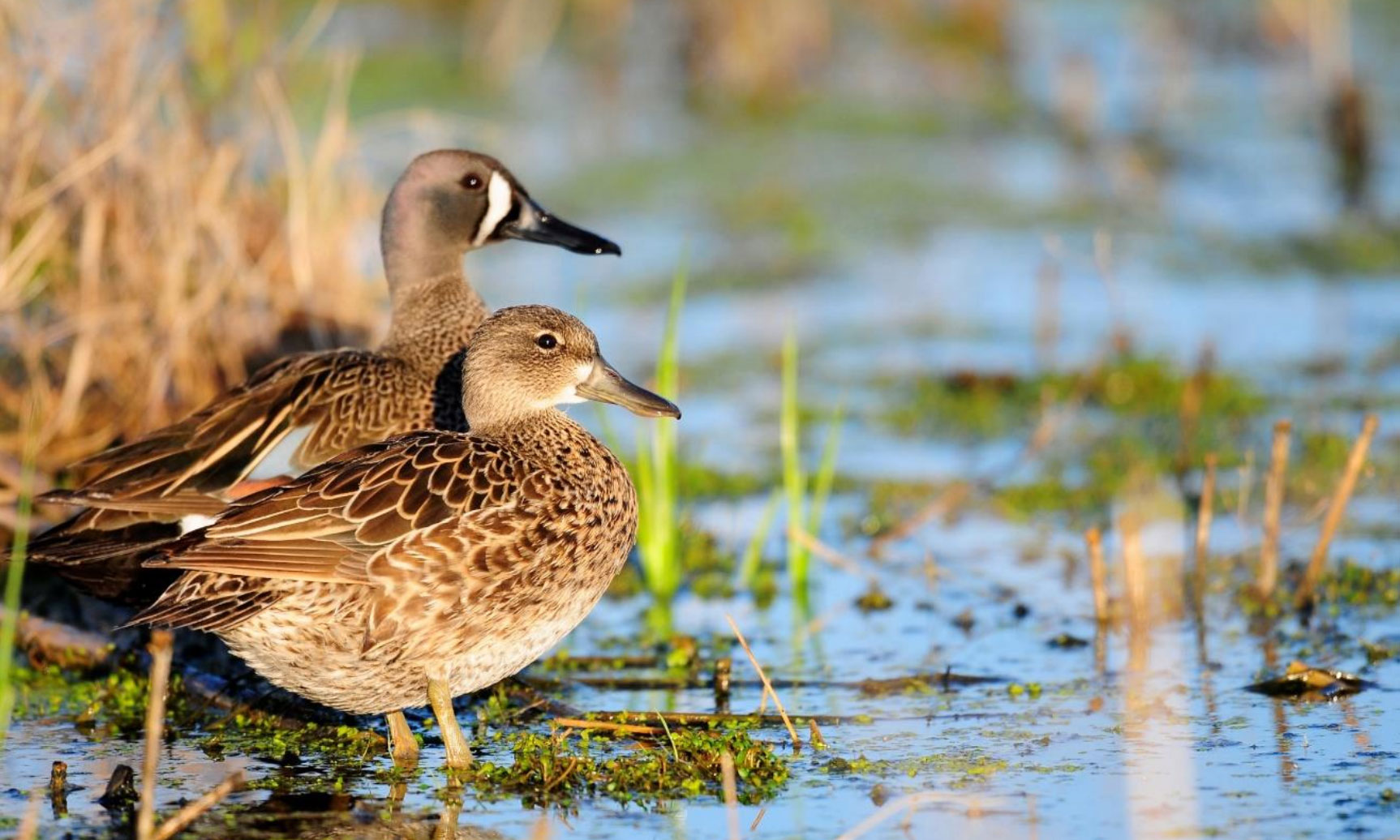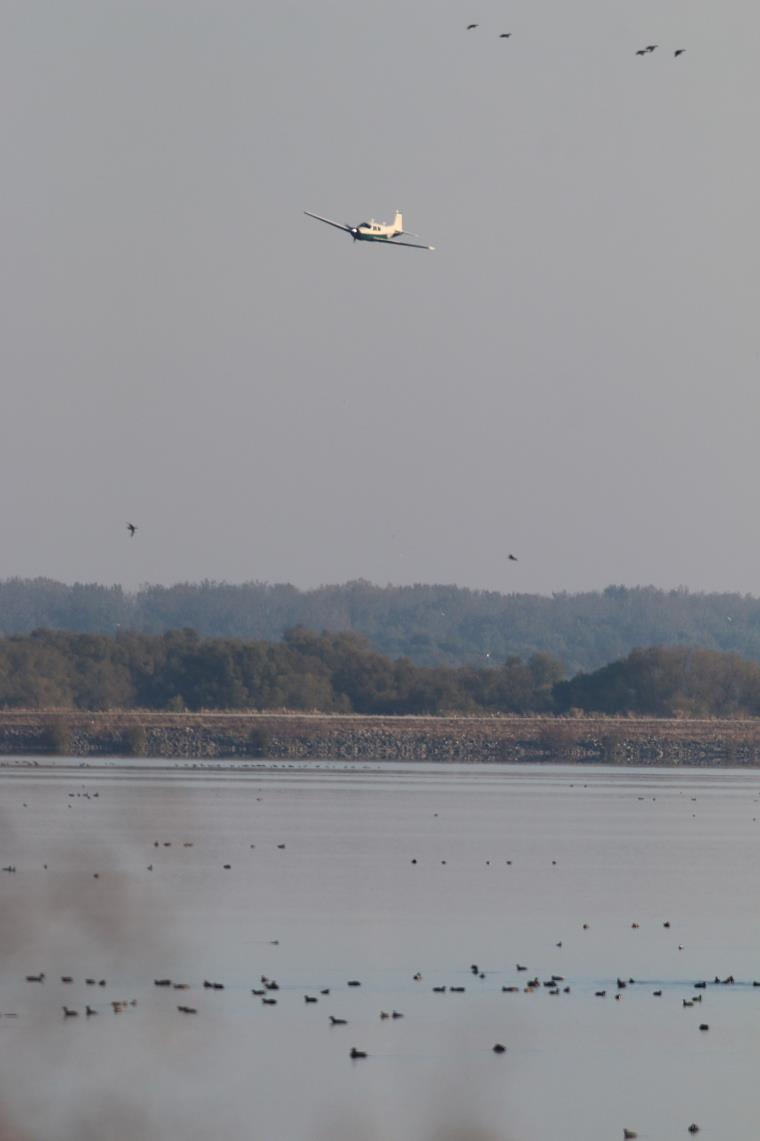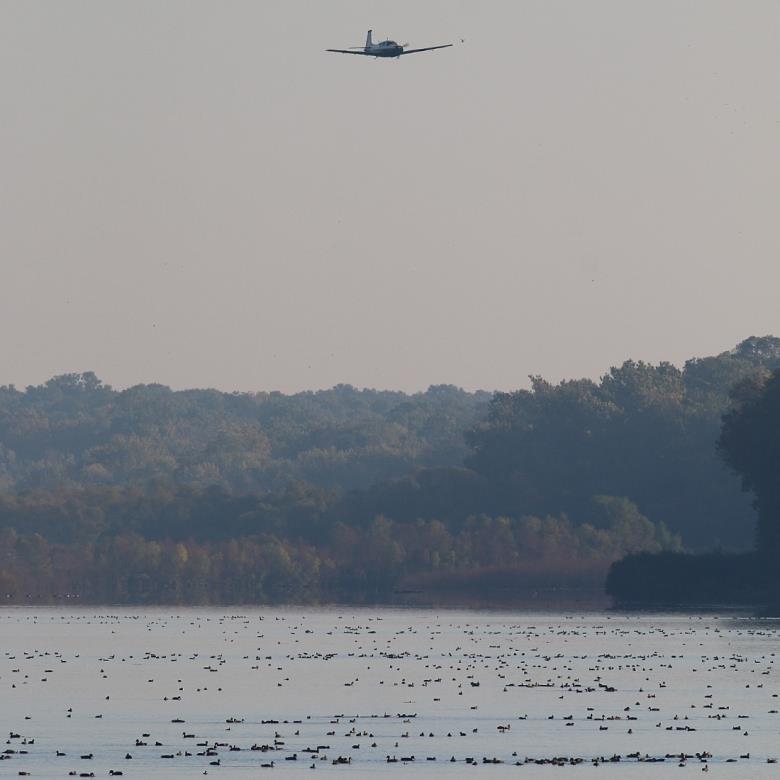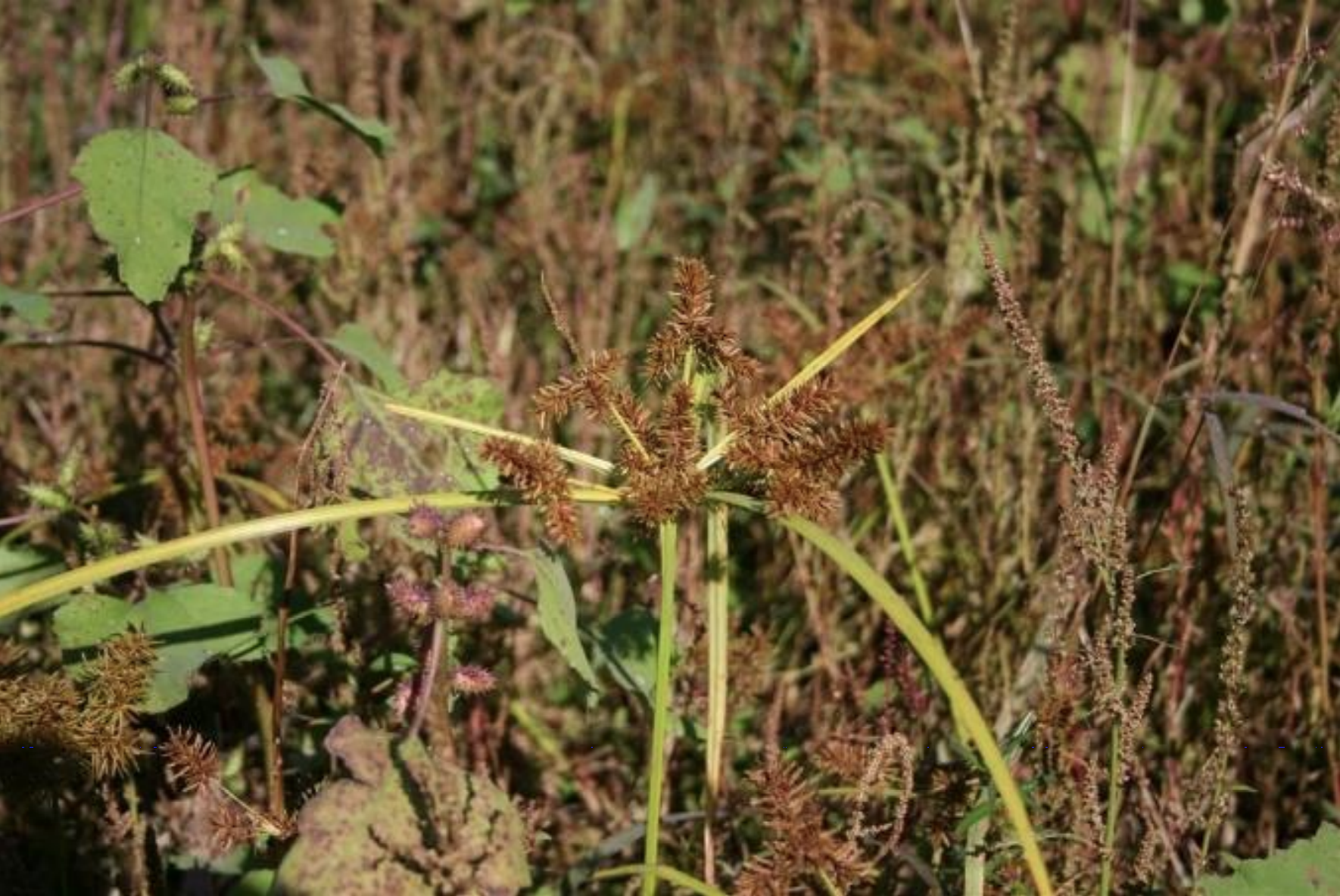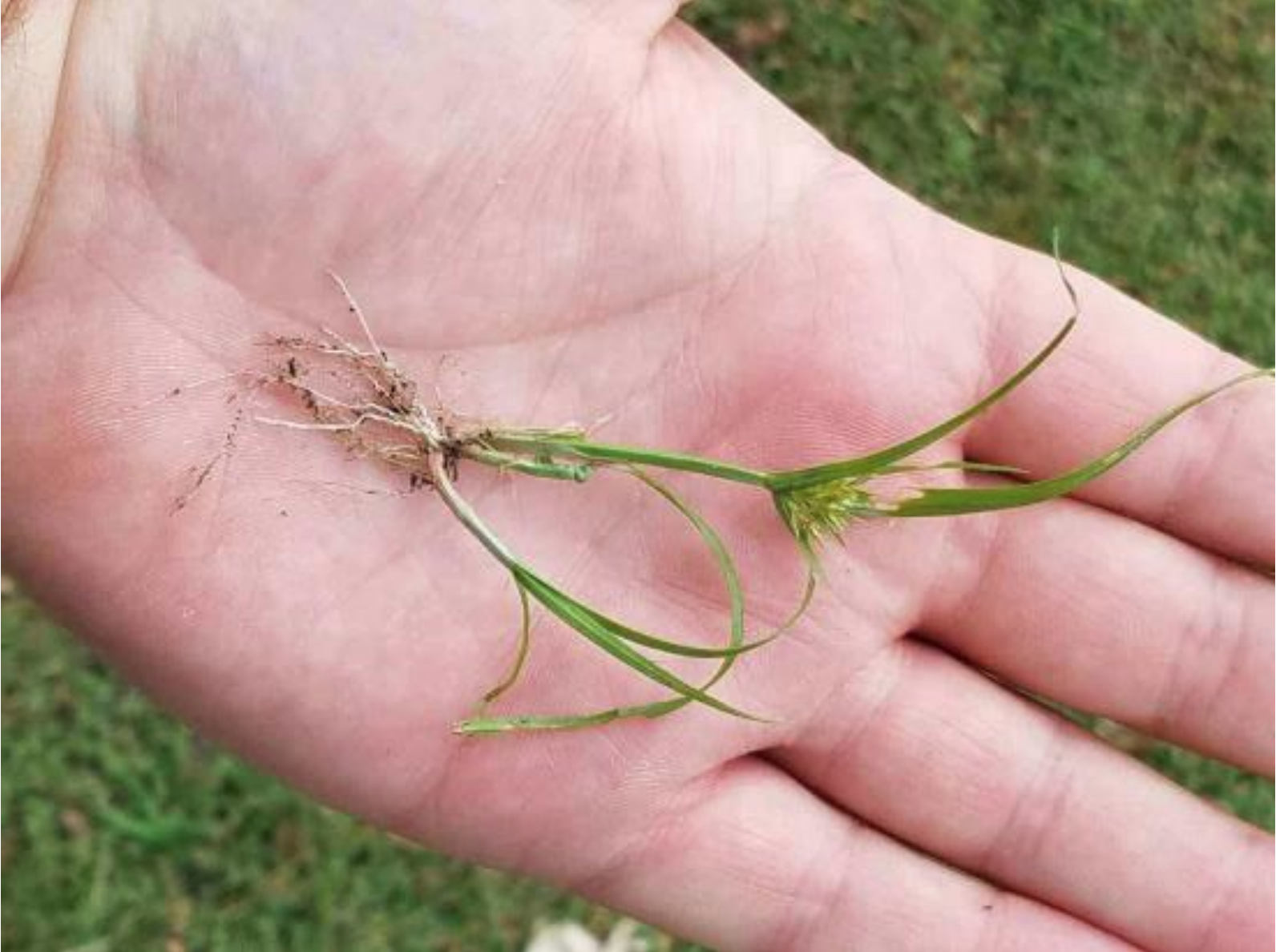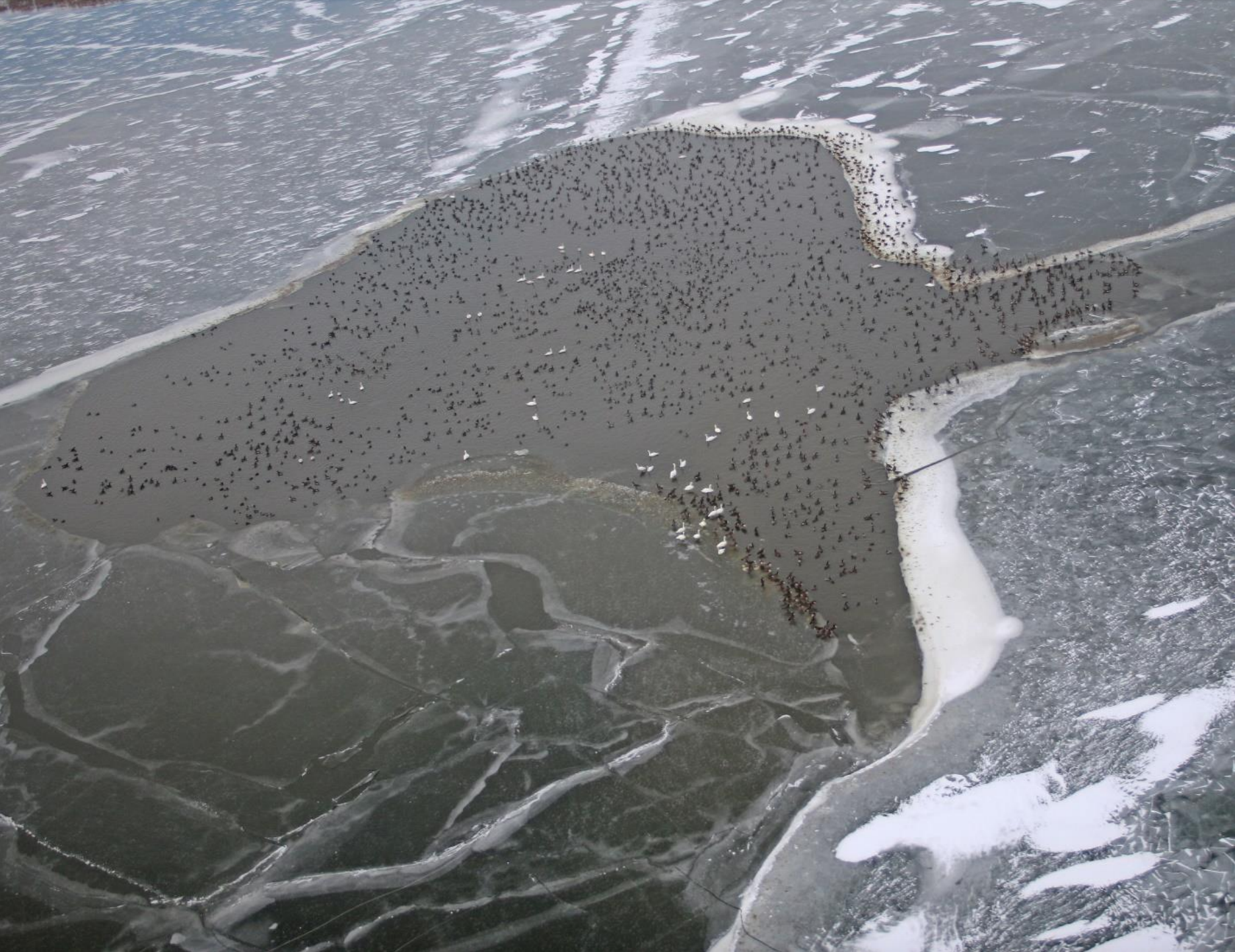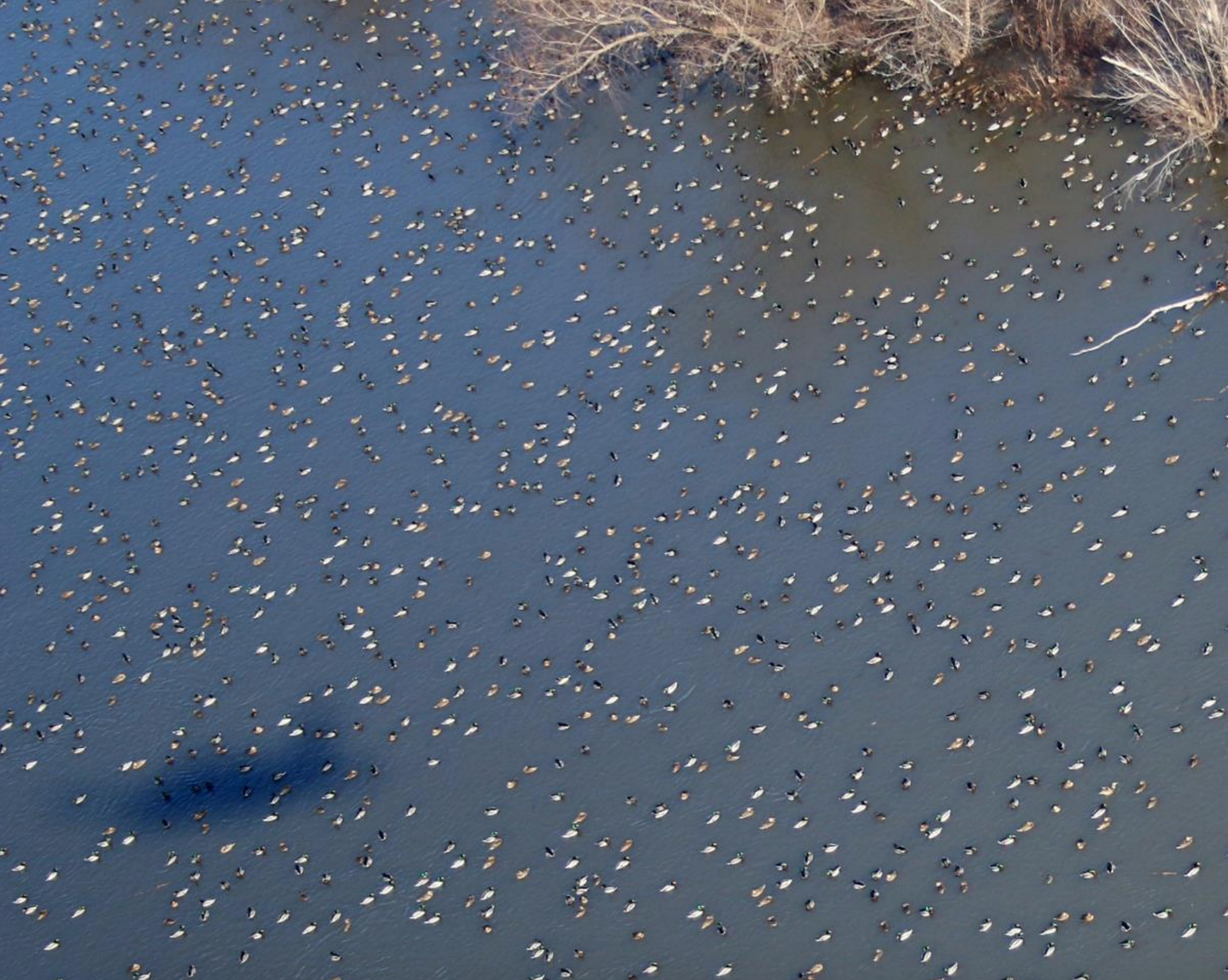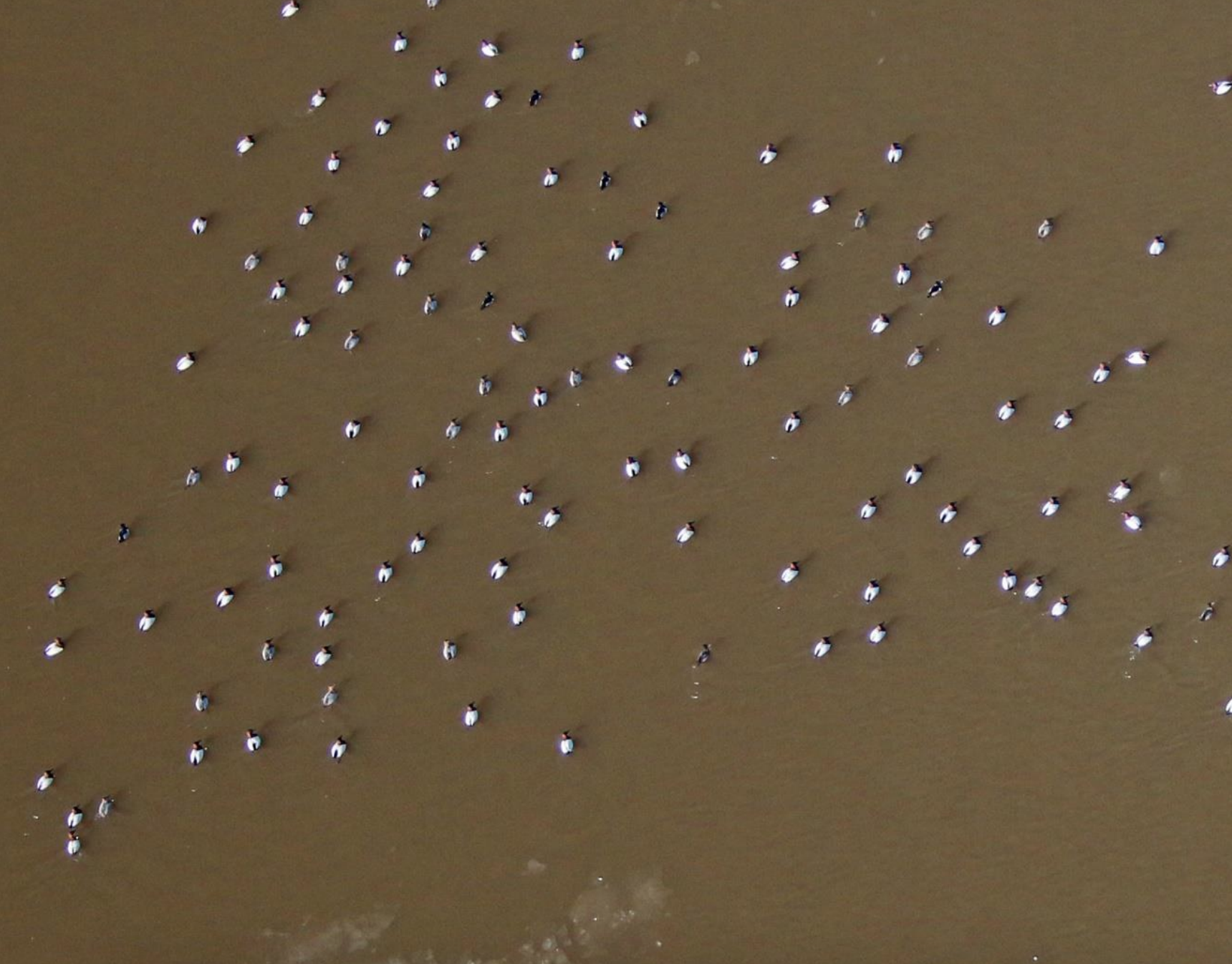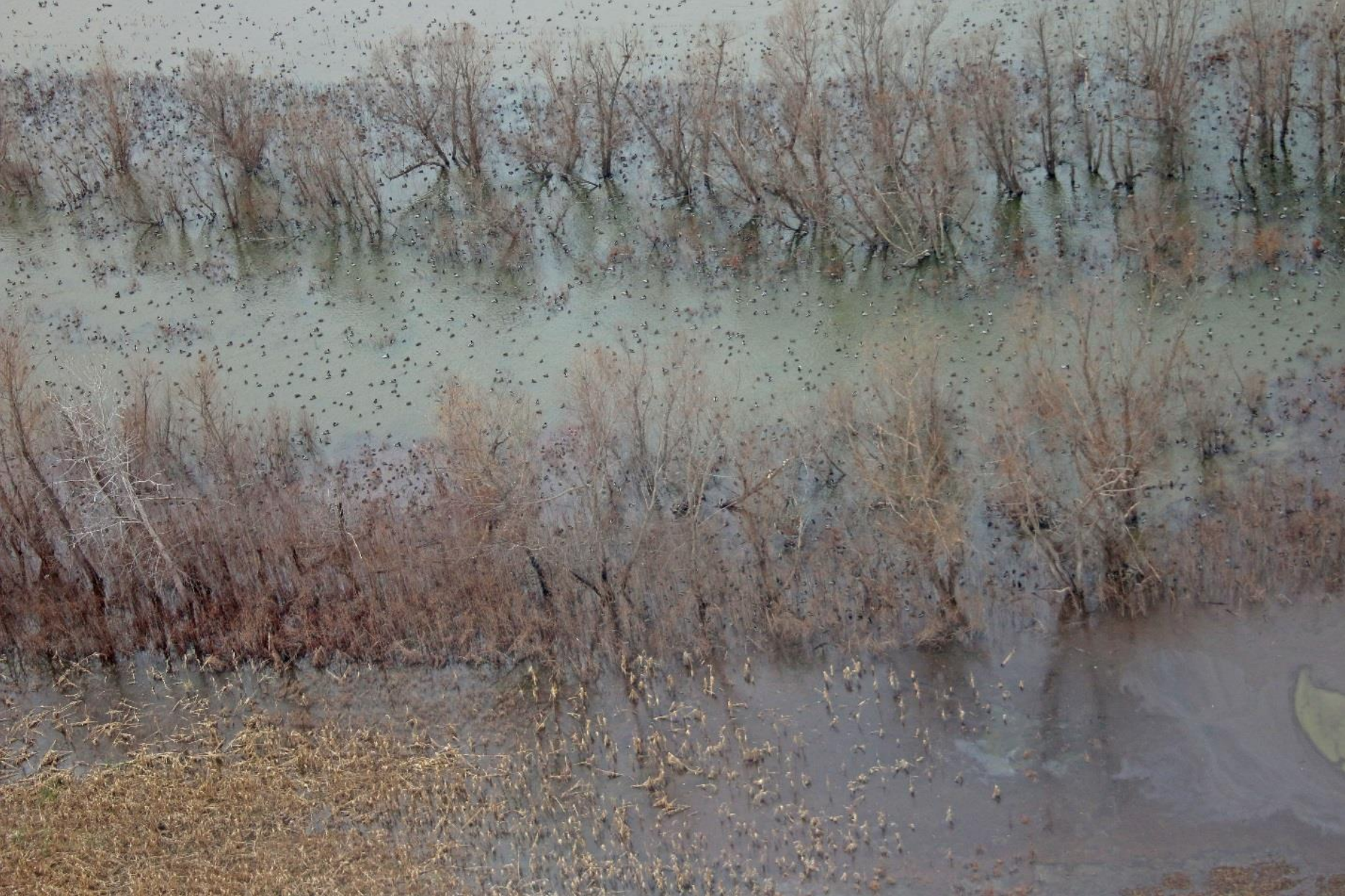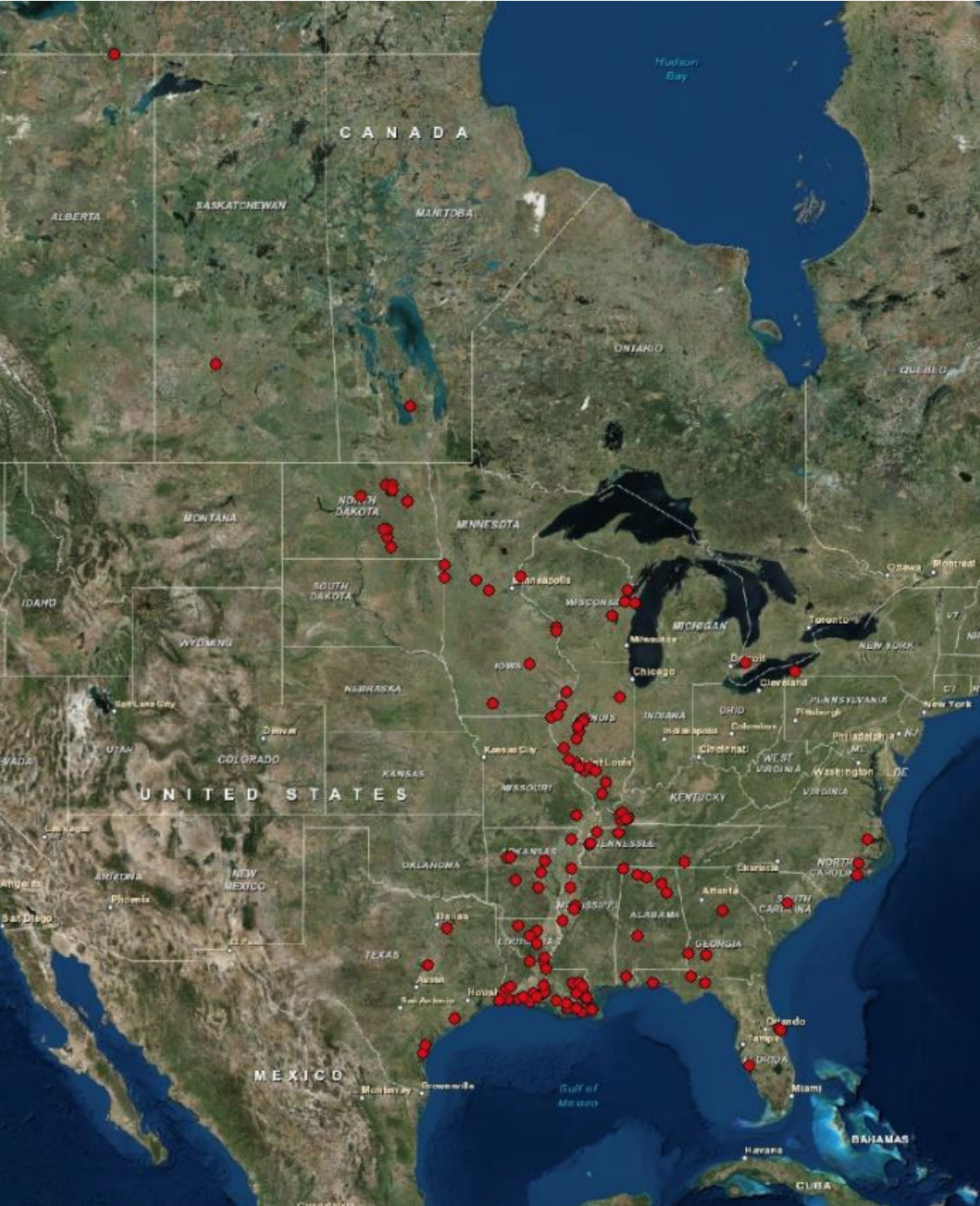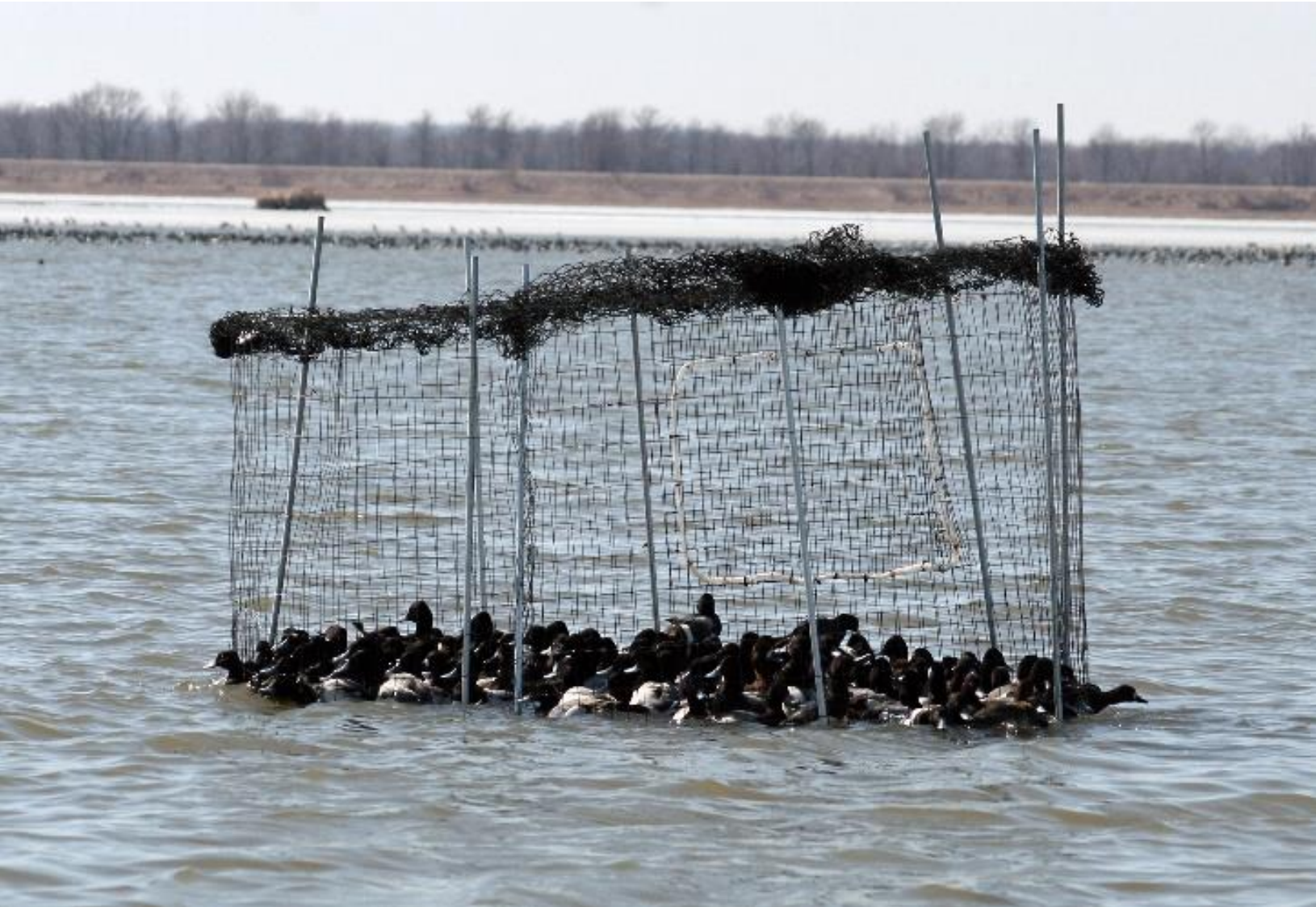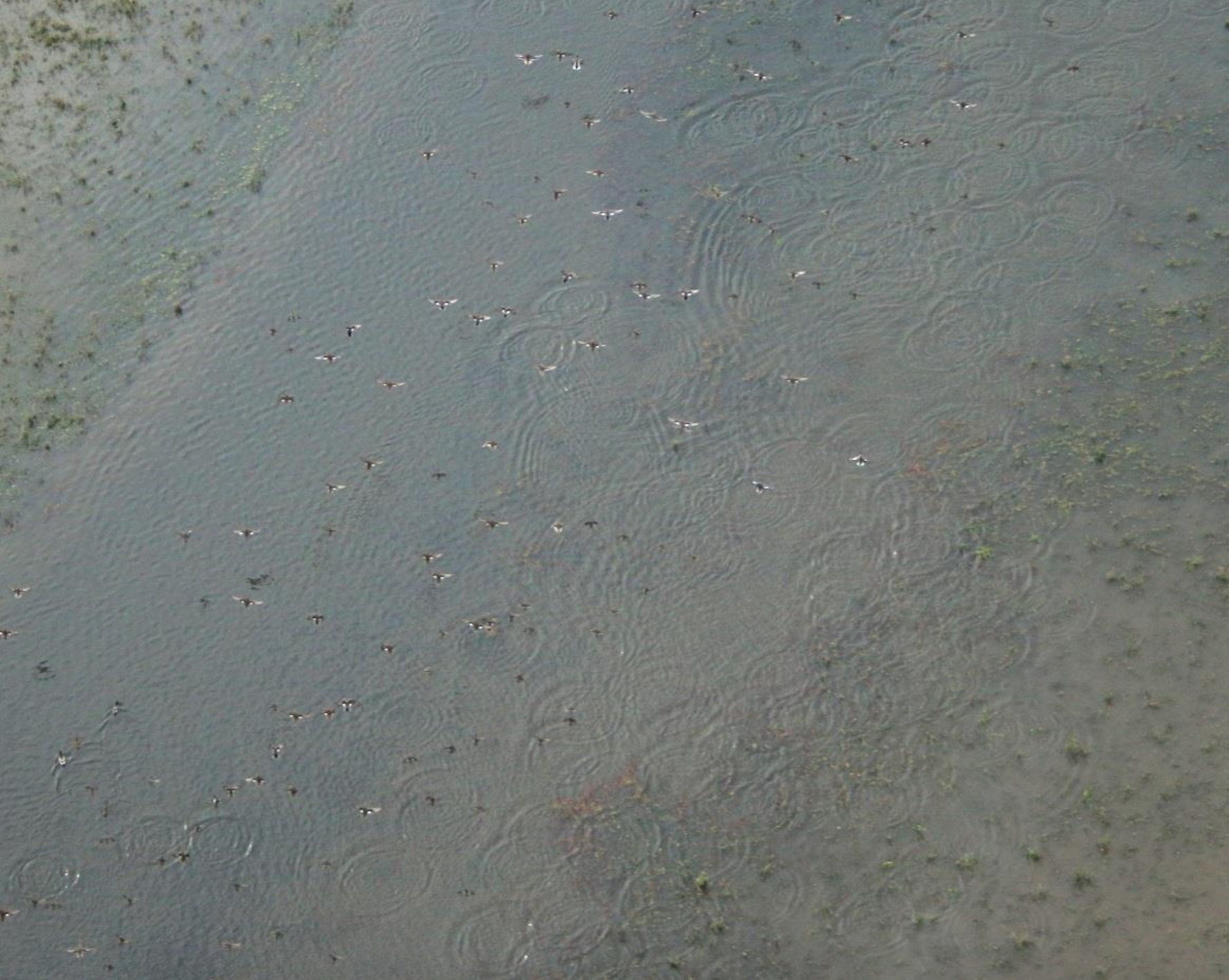
Holy shmoly, we have a bunch of birds for the end of October! We flew the waterfowl survey on Halloween Day and estimated nearly 700,000 ducks on the Illinois and Mississippi rivers. If you didn’t have a successful central zone duck season opener, I’m sorry because you should have.
We estimated 341,355 total ducks along the Illinois River which was 41% above the 10-yr average and 87% above last week. Duck abundance along the central Mississippi River was slightly greater at 354,070 ducks. This estimate was 123% above the 10-yr average. Mallards are starting to accumulate along both rivers; however, northern pintail, American green-winged teal, and gadwall are the reason for the big numbers. Northern pintail are early season migrants and usually skedaddle when the temperatures plummet. However, some pintail hold on until the bitter end when ice forces them out; especially in the confluence region of the Illinois and Mississippi. We even had some diving ducks arrive, as I saw rafts of lesser scaup, or bluebills, on the Illinois River and on Pool 19, Mississippi River.
This week I am focusing on all those gadwall observed on the waterfowl survey. Gadwall, or gray ducks, are considered herbivores and generally use areas with submersed aquatic vegetation on which they forage. Submersed aquatics are the plants growing under the water’s surface that gives you fits when you’re bass fishing in the summer time. Gadwall concentrate on wetlands with submersed vegetation; hence, their numbers are usually greater on Hennepin & Hopper lakes, Banner Marsh, and Emiquon. They also utilize wetlands with high-quality moist-soil vegetation where they can gather an abundance of moist-soil seeds. This is why there were over 38,000 on Swan Lake near Grafton, IL. Gadwall are easily identified by their “white windows” on their speculums (i.e., along the inner and lower portion of the wing). I hope you can see the white speculums of the gadwall in the attached photo. If you look hard, you might see some northern shoveler, northern pintail, and mallards in the photo. Good luck hunting and be careful out there!
Stay tuned for more updates next week…
